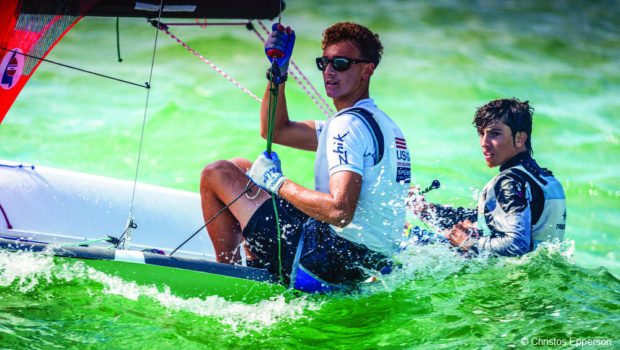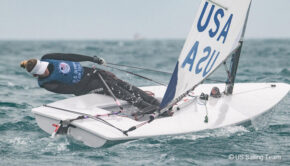Revitalizing American Olympic Sailing
Published on June 16th, 2016
by Craig Leweck, Sailing World
It usually takes a catastrophe to alert us to a problem. How many bridges must fall before we deal with our aging infrastructure? Will we deplete Social Security before we address the situation? Why is doing what’s needed always a priority once it’s too late? I might ask the same of our Olympic sailing efforts.
American sailing has a long history of Olympic domination: No country has won more total medals than the United States. We lead the count when it comes to silver and bronze medals. Only Great Britain holds more gold. Since 1932, American sailors have won medals in every Olympic regatta in which they’ve competed, but not in 2012. Getting skunked was inevitable. The warning signs were there, but it took a kick in the ass to prompt action.
Those warning signs were the result of good intentions. Youth sailing in the United States was organized like other youth sports, and sailing had become age-based, with sturdy institutional boats providing broad access. Better structure and coaching saw participation increase significantly. There was little to complain about, but there was a festering problem: “Sailors were learning more and more about less and less,” says Charlie McKee, US Sailing Team Sperry’s current high-performance director.
American sailors launching their respective Olympic campaigns, often after college, were ill-prepared. Development of Olympic boardsailing and catamaran athletes was virtually nonexistent, and dinghy sailors primarily sailed low-tech, low-performance boats. The young aspiring sailors were well traveled, having crisscrossed the country to compete in the popular youth events, but they were only being challenged by competitors their own age. They lacked the experience and skill needed to sail at the Olympic level.
It hadn’t always been that way. McKee, a double Olympic medalist, was aging out of youth sailing when the structure was being formed. He considered the diversity of his background to be an asset. “We sailed all kinds of boats, whatever we could get our hands on,” he says. “But also, when I was a kid, I never won at sailing because I raced a lot more against adults. I was lucky the people that were a little bit older than me were very, very good sailors. I wasn’t going to beat Carl Buchan, or Craig Thomas, or my brother Jonathan, but I kept after it because I loved it and wanted to learn and improve.”
The long-term effect of hyperorganized youth sailing was a slow burn on the Olympic program. After some hugely successful Games, the final haul was in Sydney in 2000, with four medals. The US Sailing team netted two medals in 2004 and 2008, respectively, but the sailors were older, most events had no depth, and there wasn’t enough funding or time to groom new campaigners for the podium.
It’s easy to peg this situation entirely on funding, or the perceived lack thereof, but doing so wouldn’t tell the whole story. Yes, the US Sailing team’s budget wasn’t on par with other national sailing programs, but plenty of money was spent grooming young sailors before they began Olympic campaigns. It just wasn’t spent very well to prepare them for their campaigns. And once young sailors did commit to an Olympic campaign, most parents had closed the checkbook. They had already paid plenty for coaches, clinics and competitions. Without start-up support, talented kids either turned to pro sailing or tapped out altogether. – Full report









 We’ll keep your information safe.
We’ll keep your information safe.